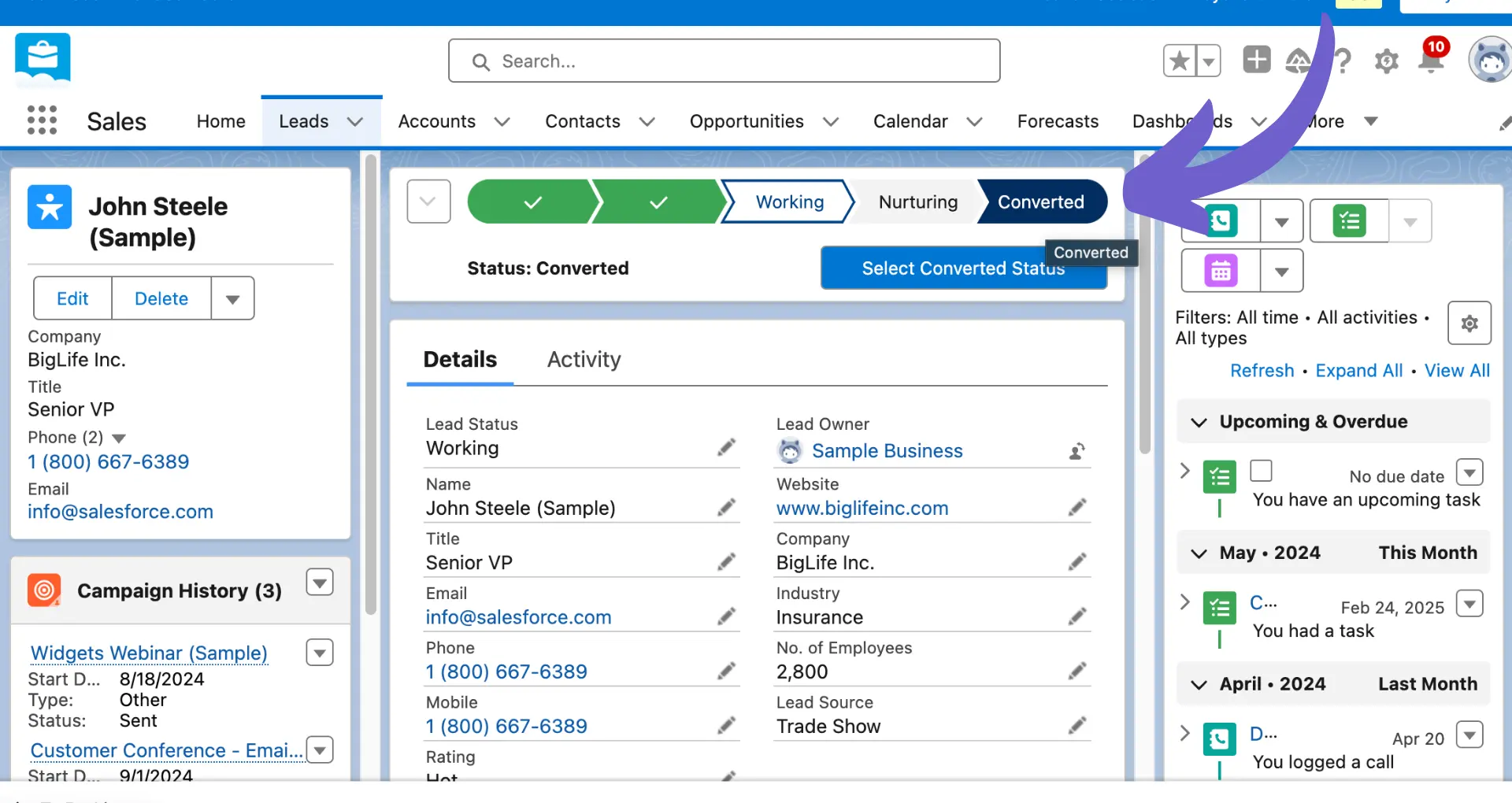Sales automation has become a game-changer in the modern business landscape, revolutionizing the way companies approach their sales processes. By harnessing the power of technology, businesses can streamline their sales operations, boost efficiency, and drive revenue growth. In this blog post, we'll dive into the world of sales automation, exploring its key components, real-world examples, and strategies for overcoming implementation challenges. Seamlessly add new opportunities to Salesforce CRM with Bardeen, enhancing sales tracking and pipeline management at the click of a button.
Understanding Sales Automation: What It Is and Why It Matters
Sales automation is the process of using technology to automate repetitive and time-consuming tasks in the sales process. By leveraging software and tools, businesses can streamline their sales operations, boost efficiency, and drive revenue growth. In today's fast-paced business landscape, sales automation has become a game-changer, transforming the way companies approach their sales processes.
The impact of sales automation on modern sales practices is significant. It allows sales teams to:
- Automate lead generation and qualification
- Streamline contact management in CRM systems
- Personalize and scale email outreach
- Simplify opportunity tracking and management
- Provide real-time insights and analytics
According to a recent study by McKinsey Global Institute, one-third of all sales activities can be automated. This translates into significant time savings for sales teams, allowing them to focus on high-value activities such as building relationships and closing deals. Moreover, the global sales automation market is expected to reach $7.29 billion by 2023, growing at a CAGR of 10.2% from 2023 to 2028, highlighting its increasing adoption across industries.
Key Components of an Effective Sales Automation System
To build an effective sales automation system, you need to integrate several key components that work together seamlessly. At the core is a sophisticated CRM software that acts as the central hub for all customer data and interactions. Modern CRMs offer advanced features like interaction tracking, which automatically logs every touchpoint with a lead or customer, providing a comprehensive view of the buyer's journey.
Another crucial element is an automated sales pipeline that moves deals through the stages based on predefined criteria and triggers. This ensures no opportunity falls through the cracks and helps sales reps focus on the most promising leads. Automated opportunity management is a growing trend in CRM, enabling teams to streamline the sales process from prospecting to close.
Integrating marketing automation features, such as email marketing and lead qualification, is also essential for a well-rounded sales automation system. Tools like automated email summaries and lead scoring help bridge the gap between marketing and sales, ensuring only qualified, sales-ready leads are passed on to the sales team.
Other key components of a sales automation system include:
- Automated data entry and record creation
- AI-powered lead prioritization and assignment
- Personalized email and follow-up sequences
- Real-time sales analytics and forecasting
By bringing together these essential elements into a cohesive system, businesses can create a powerful sales automation engine that drives efficiency, productivity, and revenue growth.
Automate your sales process with Bardeen. Download now and transform your sales operations!
Practical Examples of Sales Automation in Action
Let's dive into some real-world examples of businesses that have successfully implemented sales automation to streamline their sales funnels and manage sales operations more effectively.
One prime example is how automated opportunity creation in Salesforce has revolutionized sales tracking for many companies. By setting up triggers and workflows, new opportunities can be automatically generated based on specific criteria, ensuring no potential deal falls through the cracks.
Another powerful use case is the integration of external data sources with CRM systems. Tools like Bardeen allow businesses to automatically create Salesforce accounts using information from Crunchbase, streamlining the prospecting process and enriching CRM data.
Email automation is another game-changer in the sales world. Sending personalized emails to Salesforce contacts can be automated based on specific triggers, ensuring timely and relevant communication throughout the sales cycle.
When it comes to managing sales operations, automation plays a crucial role in territory management and sales forecasting. Salesforce's automation capabilities, often taught in their Sales Cloud training programs, enable businesses to optimize territory assignments and generate accurate sales projections based on historical data and AI-powered insights.
These are just a few examples of how sales automation is transforming the way businesses approach their sales processes. By leveraging the right tools and integrations, companies can create highly efficient and scalable sales funnels that drive growth and revenue.
Overcoming Challenges in Sales Automation Implementation
Explore Bardeen's powerful sales automation playbooks and download now to supercharge your sales operations!
While sales automation offers numerous benefits, organizations may face various challenges during implementation. One common pitfall is over-reliance on automated processes, which can lead to complacency and a lack of personal touch in customer interactions.
To effectively integrate automation tools into the sales process, it's crucial to strike a balance between automation and human effort. Automation should complement and enhance the work of sales reps, not replace it entirely. Creating new opportunities in Salesforce is a prime example of how automation can streamline tasks while still requiring human input and decision-making.
Another challenge is ensuring user adoption and proficiency with the automation tools. Providing comprehensive training and support is essential to help sales teams embrace and utilize these tools effectively. Automating the creation of new contacts in Salesforce can save time, but reps must understand how to leverage this automation within their workflow.
Integrating automation tools with existing systems and processes can also present hurdles. It's important to carefully plan and test integrations to avoid disruptions and ensure seamless data flow. Salesforce automation guides can provide valuable insights and best practices for successful integration.
To overcome these challenges, organizations should:
- Develop a clear strategy and roadmap for automation implementation
- Involve stakeholders from various departments to ensure alignment
- Provide robust training and support for sales teams
- Regularly monitor and optimize automated processes
- Foster a culture that embraces automation while valuing human touch
By addressing these challenges head-on and following best practices, organizations can successfully implement sales automation and reap the benefits of increased efficiency and productivity.






